- The first step of the Net Promoter Score (NPS) journey: data collection
- Back in 2002, Bruce Temkin & Harley Manning introduced the concept of Customer Experience…
- The 4 interaction dimensions that generate promoters (or not)
- Needs Path. Net Promoter Score explained through customer needs hierarchy.
- How does NPS score relate to each set of needs? From 0 to 8: Functional needs.
- 9 & 10: Generating promoters by fulfilling meaning and connection needs.
The first step of the Net Promoter Score (NPS) journey: data collection
You have chosen to implement Net Promoter Score (NPS) in your company and ensured everyone involved is familiar with the “10 basics things to know about NPS”.
You have then made sure you worded the NPS question effectively and started sending your NPS survey across all your critical touch-points along customer journey or customer lifecycle. The survey responses are coming in and customers NPS scores range all over the spectrum from 0 to 10. How to make sense of that?
Why are customers giving us a 0? Why do we have so many 7’s or 8’s but we don’t seem to be able to get customers rating to 9’s or 10’s?
These are just some examples of the many questions related to understanding customer reasons behind a given NPS score (and CSAT – customer satisfaction – score), which I have heard over the past ten years.
Back in 2002, Bruce Temkin & Harley Manning introduced the concept of Customer Experience…
While writing my Master Thesis on Customer Experience during my internship at Forrester Research, in 2002, I got totally engaged with and inspired from the report “Focus On Customer Experience, Not CRM” by Bruce Temkin and Harley Manning (Forrester Research, 2002) which described how CEM (Customer Experience Management) projects would need to be:
- Customer-centric.
- Process-based.
- Milestone-driven.
Customer-centricity required companies to engage in high-priority customer conversations and to do so through the following actions:
-
- Satisfy customers’ basic needs first: I will cover this in depth in a moment
- Identify personas for key customer segments: this is what became the wider “persona design” methodology we know today
- Optimize around critical user scenarios:this is what became the more comprehensive “customer journey mapping” methodology we know today
- Monitor customer feedback: this is what two years later became Net Promoter Score (NPS) as introduced by Satmetrix and Bain & Co. Looking back at this 2002 Forrester report, I found interesting to see Bruce Temkin referencing to a Forrester brief (the March 20, 2002 Forrester Brief “Satmetrix Embeds Customer Feedback In CRM”) which describes the first steps of Satmetrix into the customer survey space. He closes the report expecting CRM vendors like SAP and Peoplesoft to incorporate survey capabilities into their platforms and Siebel to purchase Satmetrix by end of 2002.
Fast-forward to today and we all know how it went instead.
But let’s go back to “Satisfy customers’ basic needs first” which is the focus on this post.
Figure 1 “Firms Must Increasingly Satisfy Customers’ Hierarchy Of Needs” (from report “Focus On Customer Experience, Not CRM”, Forrester Research, September 2002)
I found Figure 1 (see above) in the report especially meaningful. I included it in my thesis, and when, two years later, I started analysing customer survey responses to either CSAT (customer satisfaction) or NPS survey, I elaborated an adapted version of Maslow hierarchy of needs and I have been using this new framework ever since for all my survey’s responses analysis work.
The 4 interaction dimensions that generate promoters (or not)
Years of extensive CSAT and NPS analysis (especially of customer comments) can be summarised in the main conclusion that there are 4 key dimensions that impact customer perception during each interaction with a company.
To pursue and achieve customer happiness, gain promoters & ensure loyalty, you need to walk a particular needs & desires path, within a given timeline, requiring limited to no customer effort, recognising, acknowledging and responding appropriately to customer emotions along the journey:
- Needs Path: you need to move up the steps of the customer hierarchy of needs pyramid from the bottom up
- Timeline: how quickly you make progress on the steps determines whether you deliver customer experience within the customer’s “happiness point” or after the customer’s “boiling point”
- Customer effort: the way companies walk the path in a given timeline impacts the effort required by customers to achieve their goal
- Customer Emotions: you need to be mindful of the emotions that also accompany each set of needs, the evolvement of resolution time, and customer effort required, and react differently to each emotion with empathy
How these 4 elements of customer perception are impacted during each interaction can generate promoters and ensure customers'(and employees’) happiness, loyalty, and positive word-of-mouth
Figure 2, How customers perceive the interactions in “Net Promoter Score explained with Maslow’s hierarchy of needs”
Needs Path. Net Promoter Score explained through customer needs hierarchy.
In this post, we want to focus on the needs path within a specific context. In future posts, we will be looking at each of the other elements and different settings (from customer service to technical support, from online shopping to software products).
The figure below shows graphically how NPS score relates to each set of needs.
This is an example from a Customer Support experience, but the same model applies to product experiences (i.e. software), to e-commerce (i.e. online shopping), to retail experiences and to virtually every customer journey/experience.
Figure 3 NPS explained with customer hierarchy needs: Customer Support example, in “Net Promoter Score explained with Maslow’s hierarchy of needs”
How does NPS score relate to each set of needs? From 0 to 8: Functional needs.
- (0-3) Unmet basic needs: customers who give a score in this range are customers who haven’t even got their basic needs fulfilled. They either haven’t managed to get in touch with the correct agent (i.e. they were unable to find support contact details online, or they got stuck into IVR-loop-hell or had to wait 20 minutes in queue). Or, having managed to talk to someone, it wasn’t an agent who spoke their language correctly or understood their request. Usually, they still have an open issue when they fill in the survey, and they require immediate follow-up (what we call “fire-fighting” in the NPS Household)
- (4-5) Basic needs: “Timely access an agent which speaks same language, get your request understood, get an answer or have your problem solved in a reasonable amount of time”.
In Maslow’s pyramid these are also called “Physiological Needs”, it’s what we need to live.
In a customer-company context they correspond to being able to buy or use the product or service the company is offering in order to perform the action such product or task allows them to do (i.e. getting the right advise on a given medicine or being able to make a juice with juicer just bought) or getting through to the company support center in case something goes wrong with purchase or usage (i.e. in case I cannot go through an online check-out, or I receive a defective product.
Fulfilment of at least these needs is required for the customer to give a score of 4 or 5. Typically at this point, the issue has not been solved satisfactory (in which case a follow-up is still required), or it has taken too long to get the solution, with too much effort from the customer side and little understanding or reassurance from the company side.
- (6) Safety (and security) needs: “Easily accessible phone number and email, toll free phone number; visibility on situation & possibility to obtain (reassurance about) issue resolution or refund/replacement/ exchange and/or upgrade”.
Customers understand that things can go wrong and mistakes can be made: yet they want to be able to trust that when this happens, companies have structures and processes in place to solve the problem satisfactorily. This is the basis for a 6. At this point, the company has done the bare minimum it was expected from her.
- (7-8)Efficiency & consistency needs: “Speak with an agent who quickly understands request/issue & is empowered to solve it; receive a valid answer/solution for the issue, receive updates if the issue takes longer to resolve, be given the same level of service across all contact points”..
Here I’m slightly diverging from Maslow’s categorization, creating what could be considered an extension of the “safety and security” category. Speed, lack of effort (efficiency) and consistency across different channels and/or representatives of the company, have proven to be critical requirements from customers, both in B2C and B2B environments. When this set of needs is met, customers give an NPS score of 7 or 8. Their functional requirements have been fulfilled. They are neutral or “passive” in NPS terminology.
One of the most frequent remarks I get from clients, it’s the “cultural” impact on NPS: how given nationalities (i.e. typically the Dutch!) tend to give a 7 or an 8, even when they are very happy or satisfied and how this is due to the school marks built-in system they have.
Showing this pyramid has been the most objective and useful way to “dispute” such remark. Sure, cultural background will always play a role, but I believe, and I have seen it proven over and over again, that even Dutch people do give a 9 or 10 and do go around loudly recommending a company which has been able to exceed their expectations fulfilling their “meaning and connection” needs. So what are these?
9 & 10: Generating promoters by fulfilling meaning and connection needs.
- (9) Attention & cooperation (personalized) needs: Access an agent which recognise you and already knows you & your issue from previous interactions’ notes; feel understood & have confirmation that feedback given will be passed on further in the organization.”.
These are what Maslow considered the “belonging needs” and the “esteem needs”. He still considered them “Deficit needs” as opposed to “Being needs” in which category he only had “self-actualization”.
In my years of analysing customer comments and how they relate to the score, I have come to see Maslow’s “belonging” and “esteem” needs as part of a fourth level (“Personalized needs” or “Attention and cooperation needs”) which is they key differentiator – across any country or culture – between passive and promoters.
Something starts to happen here which changes the customer perception of the experience he is having with a given company. There is a switch from a functional level to a personal level. The “company” stops being a company and begins to “humanize.” We are no longer in a buyer-seller relationship or customer-agent transaction, but we are in a partnership, the start of collaboration to get needs met in the best possible way, to get expectations not just met, but also exceeded. When these customers fill in the survey, they compliment the company, and very often have improvement recommendations that they hope and trust the company will follow-up on (with what we call “fire-prevention” or “structural improvement” in the NPS Household).
- (10) Pro-active & self-actualization needs: “Receive real empathy from the agent and connect to each other. Anticipate consumer needs and help them self-satisfying them”.
This is very much a continuation of the “personalized” needs and it relates more to the “how” and the “extent” in which they have been fulfilled. I often say to my clients, “customers of any culture and background will give you a 10, if you have managed to WOW them”. This is the space of potentialities, for doing the “unexpected,” for fulfilling needs and desires that the customer didn’t even know he had or before he even has them.
There is so much happening at each level! I will cover more in detail each and every set of needs and NPS score in a dedicated post series.
For now, I’m curious to hear your thoughts on what I shared so far. Does it resonate with you? I look forward to reading your thoughts in the comment space below.
NB> Our friends at Satmetrix want us to remind you that Net Promoter, NPS, and Net Promoter Score are trademarks of Satmetrix Systems, Inc., Bain & Company, and Fred Reichheld.
Setting up an NPS program?
Speed up the adoption of NPS in your organisation by taking the NPS Onboarding Masterclass, a two-day full immersion training that combines high-quality content, peer exchange and blended learning. This in-company training is designed by Rosaria Cirillo Certified Customer Experience Professional (CCXP) & Authorised Resource Trainer (ART) by CXPA, and will provide your organisation with in-depth learning, exercises and case studies related to the seven critical elements pivotal to the success of this program. Interested?

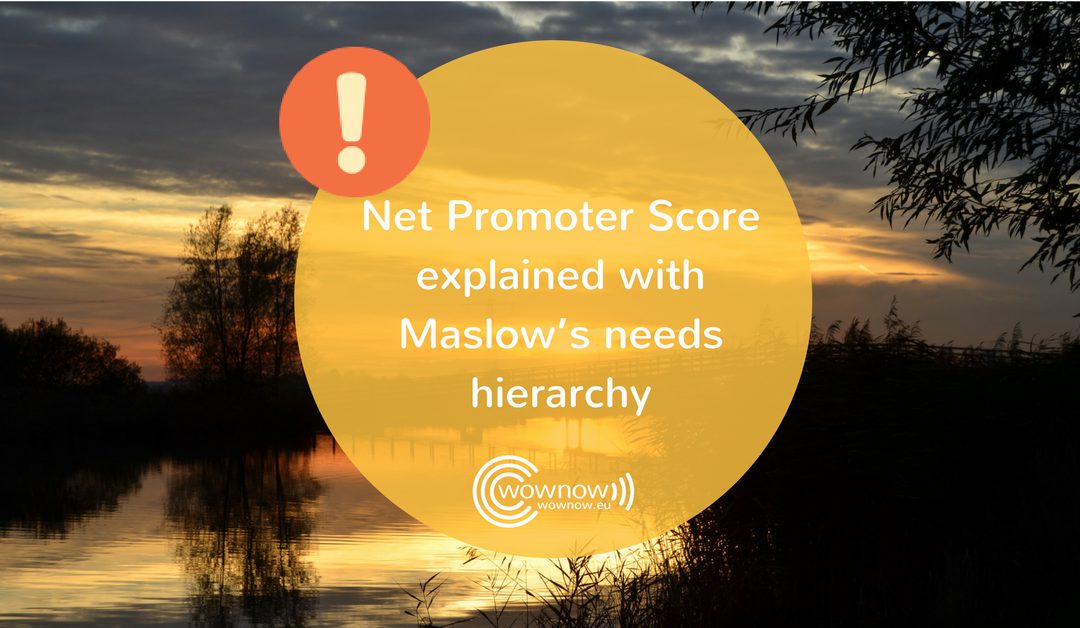
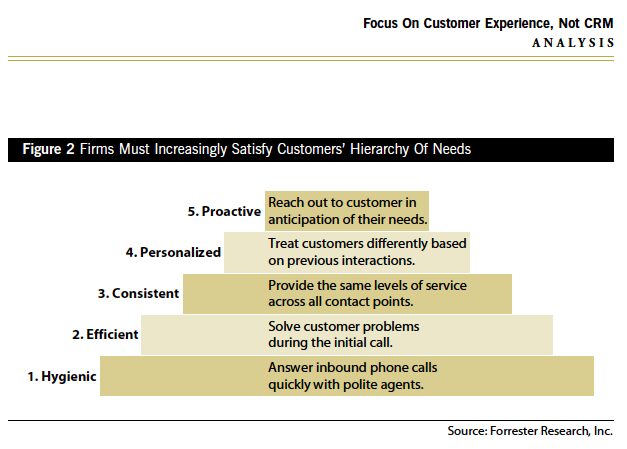


 A (little Italian) sunshine of energy, enthusiasm, and passion, with a mission to bring more happiness in the world one interaction at the time, the business world being my chosen playground!
I inspire and empower conscious leaders to nurture their happiness (moving from depleting to enriching emotions) and to move from depleting to enriching experiences, choosing, designing, and delivering WOW life-enriching interactions that contribute to everyone’s HAPPINESS, so they can achieve business and personal prosperity, making happiness their competitive advantage
A (little Italian) sunshine of energy, enthusiasm, and passion, with a mission to bring more happiness in the world one interaction at the time, the business world being my chosen playground!
I inspire and empower conscious leaders to nurture their happiness (moving from depleting to enriching emotions) and to move from depleting to enriching experiences, choosing, designing, and delivering WOW life-enriching interactions that contribute to everyone’s HAPPINESS, so they can achieve business and personal prosperity, making happiness their competitive advantage 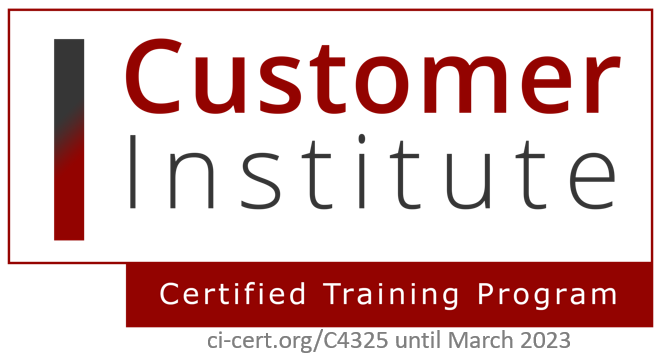

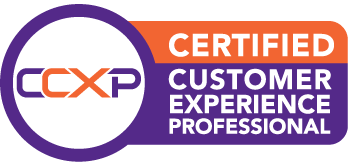
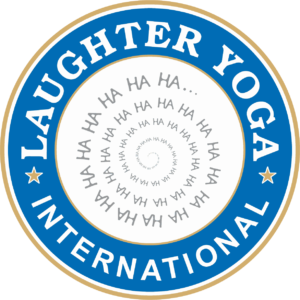




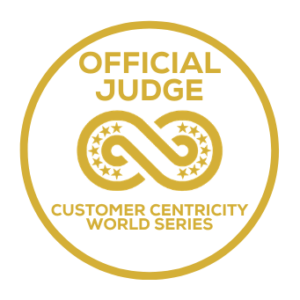
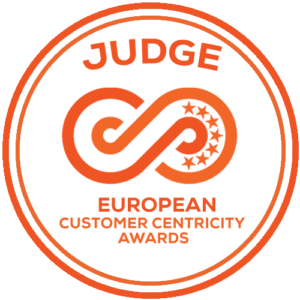
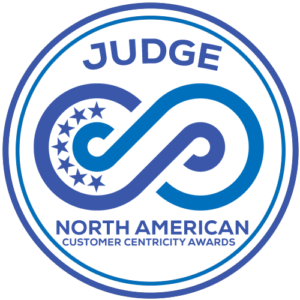
Great article! Recently we published an e-book on how to ask customers the ‘right’ questions for VoC insights.You can find it here: http://get.usabilitytools.com/49-questions/
I’d be more than happy to get your feedback after your read it!
Very good info. Lucky me I recently found your website by
chance (stumbleupon). I’ve saved it for later!
Thanks Bryon, glad to read you found it useful